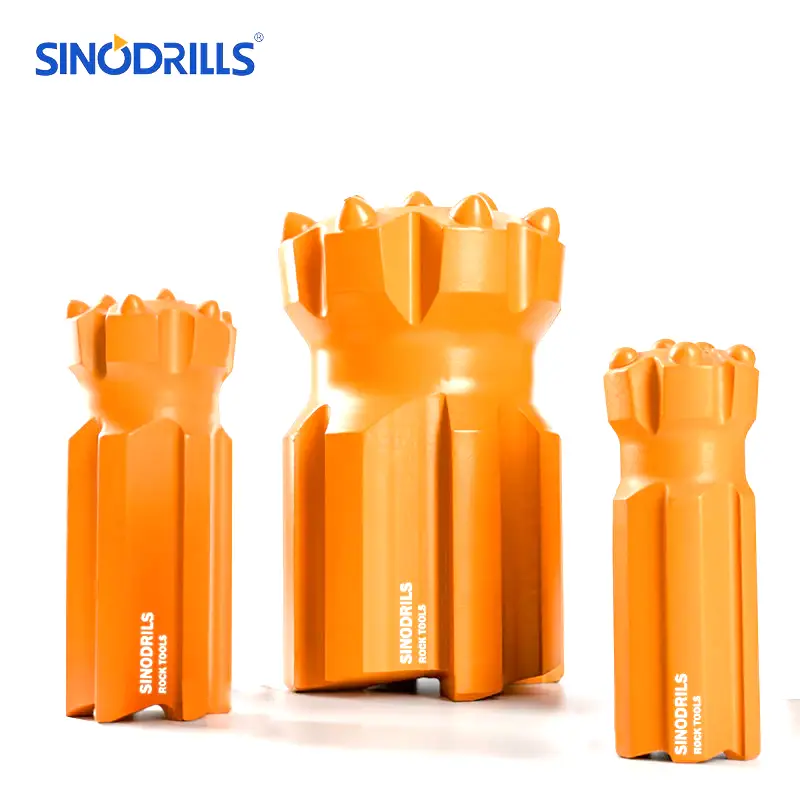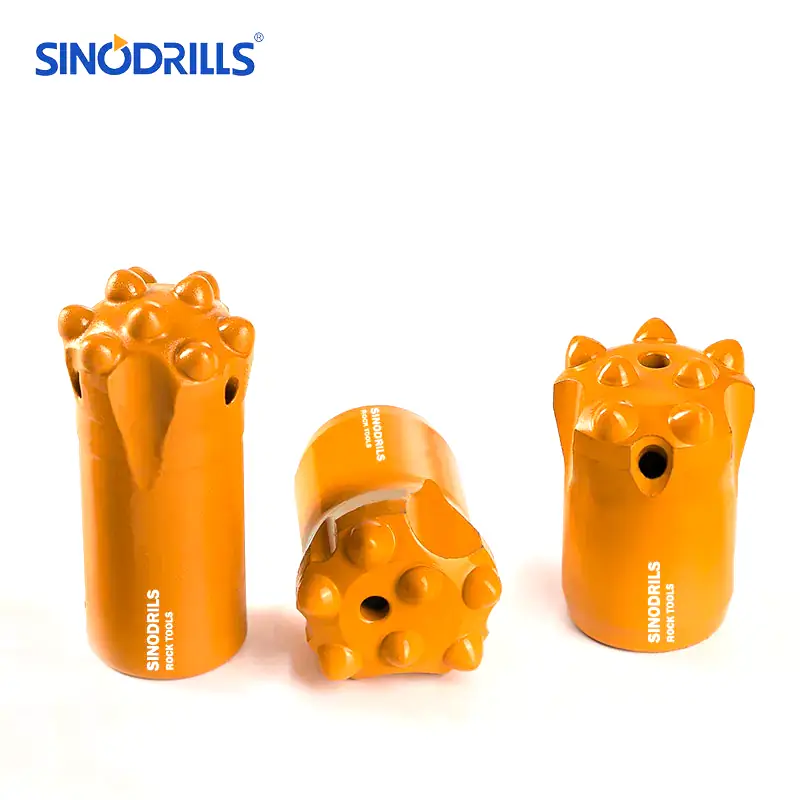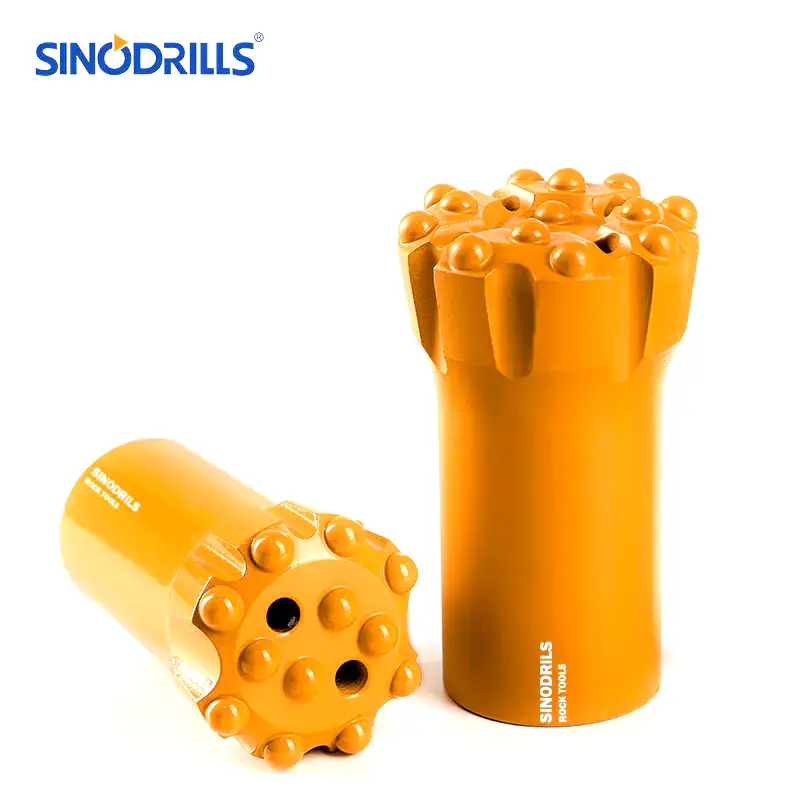Selecting the correct rock drill bit is paramount for efficient and successful drilling operations in geotechnical investigations and mining. The geological formations encountered dictate the bit’s design, material, and cutting action, directly impacting penetration rates, lifespan, and overall project cost.
This guide delves into various rock drill bit types, explaining their unique characteristics and optimal applications across diverse geological conditions, from soft soil to abrasive hard rock. Understanding these distinctions will empower you to make informed choices, maximizing productivity and minimizing downtime.
What are Rock Drill Bits?
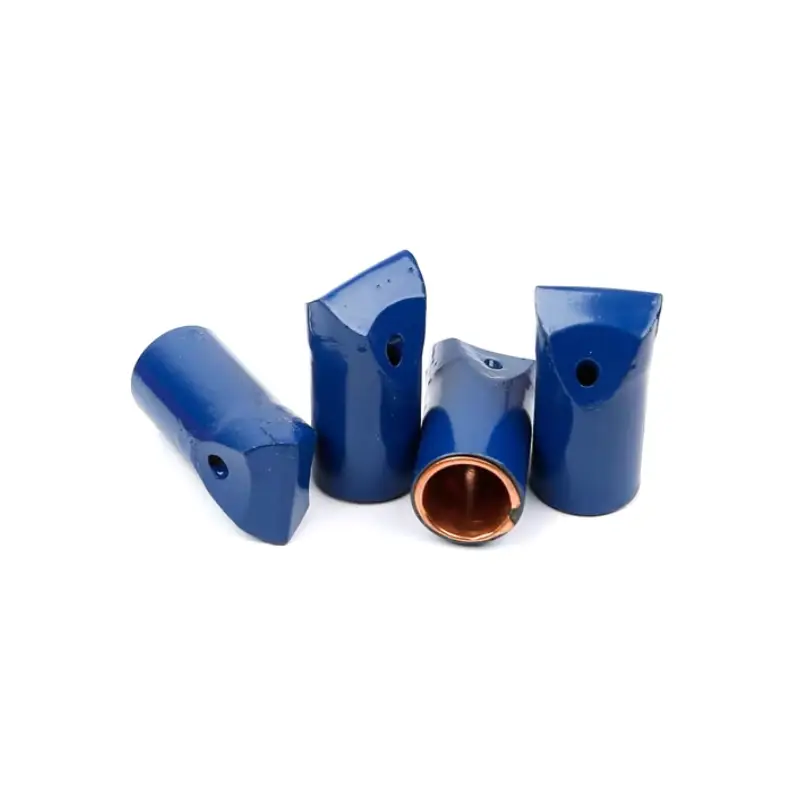
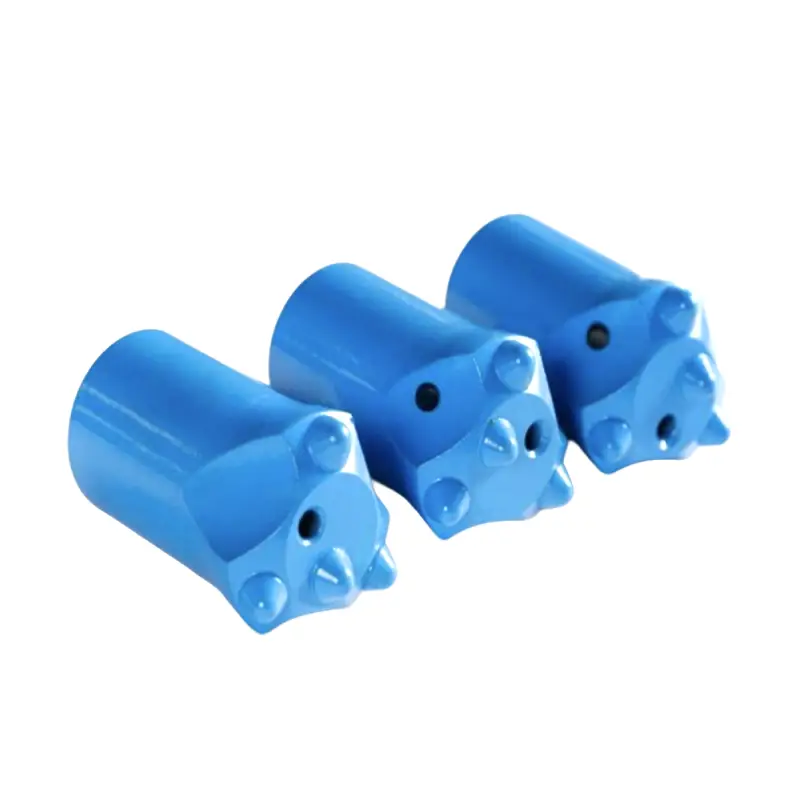
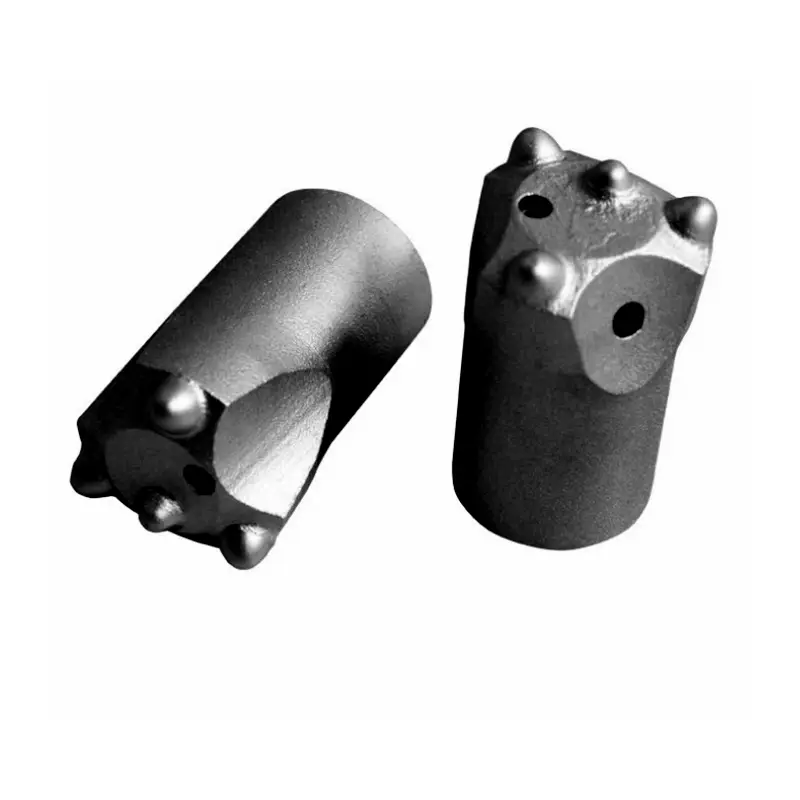
Rock drill bits are the cutting tools attached to the end of drill rods in percussion or rotary drilling rigs, designed to break and penetrate rock formations.
They are engineered with various cutting elements, such as tungsten carbide inserts or steel teeth, and come in diverse shapes and sizes to effectively fracture, grind, or chip away at different rock hardnesses and abrasive qualities.
The primary function of a rock drill bit is to efficiently create boreholes for applications ranging from mining and quarrying to construction, geotechnical investigation, and well drilling.
Rock Drill Bit Types
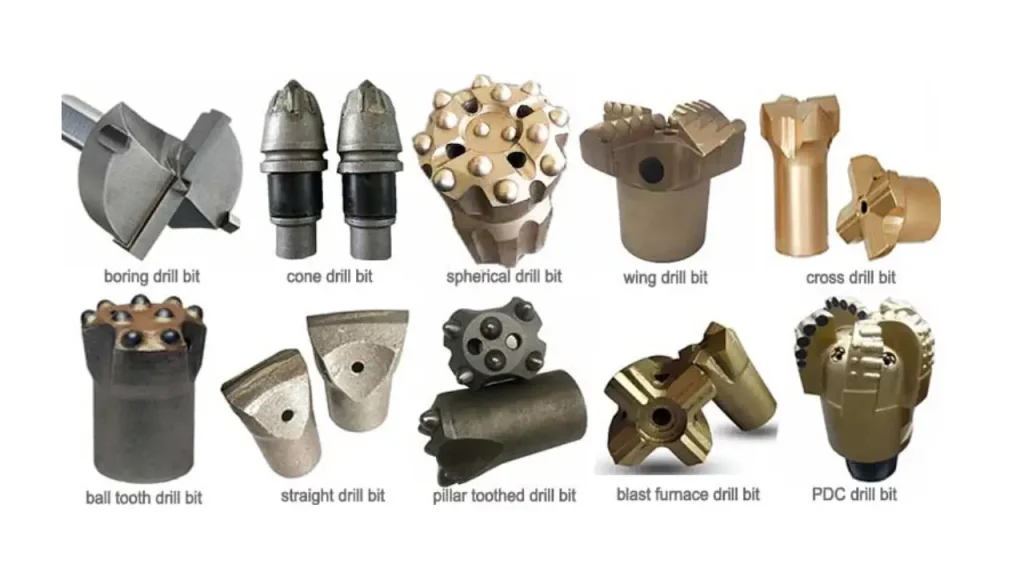
Rock drill bits are engineered for specific geological formations and drilling objectives. Their design, cutting elements, and overall structure vary significantly to optimize performance, bit life, and drilling efficiency across diverse rock types.
Boring Bit
Features: Boring bits are characterized by their large diameter and typically come in single-tooth or double-tooth configurations. The single-tooth design is robust for high-hardness rocks, while the double-tooth variant is suited for softer rock types. Their construction prioritizes cutting through large volumes of material to create wide boreholes.
Benefits: These bits excel at drilling large-diameter holes efficiently, reducing the need for multiple passes with smaller bits. This saves time and resources on projects requiring substantial excavations. Their specialized designs ensure effective material removal, contributing to smoother drilling operations and reduced wear on the drill rig.
Uses: Boring bits are predominantly used in applications requiring large-diameter boreholes, such as creating shafts, large-scale pilings, or specialized blast holes. They are commonly employed in mining, quarrying, and civil engineering projects where significant rock removal is necessary, adapting to the specific hardness of the rock.
Cone Drill Bit
Features: Cone drill bits are designed with a conical shape that ensures high drilling accuracy and a regular aperture. This geometric configuration allows for easy insertion and extraction from the borehole. They often incorporate durable cutting elements that can withstand abrasive and hard rock conditions.
Benefits: The conical design promotes precise drilling, leading to consistent hole dimensions, which is crucial for subsequent operations like blasting or grouting. Their robust construction and ease of handling contribute to increased operational efficiency and reduced downtime. The design also facilitates smooth penetration across various rock types.
Uses: Cone drill bits are suitable for a wide range of rock penetration and blasting operations, including drilling through hard rocks like granite and limestone. They are also frequently used for specific applications such as jet holes in ground improvement and grouting holes in various construction and mining contexts, where precise hole dimensions are critical.
Spherical Drill Bit
Features: Spherical drill bits are specifically designed with a rounded, spherical cutting face. This unique shape allows them to create spherical cavities or enlarge existing boreholes into a rounded profile. Their construction focuses on achieving a curved cutting action rather than a straight cylindrical cut.
Benefits: The primary benefit of spherical drill bits is their ability to form precisely shaped spherical cavities, which cannot be achieved with conventional cylindrical bits. This specialized capability opens up possibilities for unique geological studies or specialized engineering applications. They offer controlled material removal for specific cavity geometries.
Uses: Spherical drill bits are mainly used for drilling spherical cavities or for specialized applications such as drilling cores that require a rounded bottom. They find niche uses in geological research, mineral exploration (especially for core drilling in specific formations), and certain geotechnical testing procedures where a spherical cavity is needed for instrumentation.
Wing Blade Drill Bit

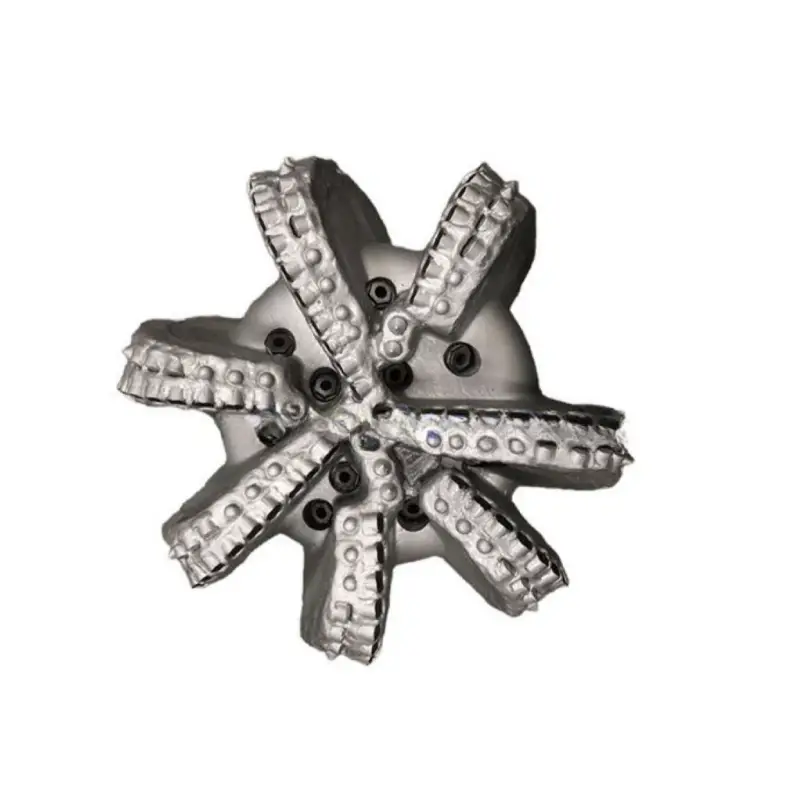
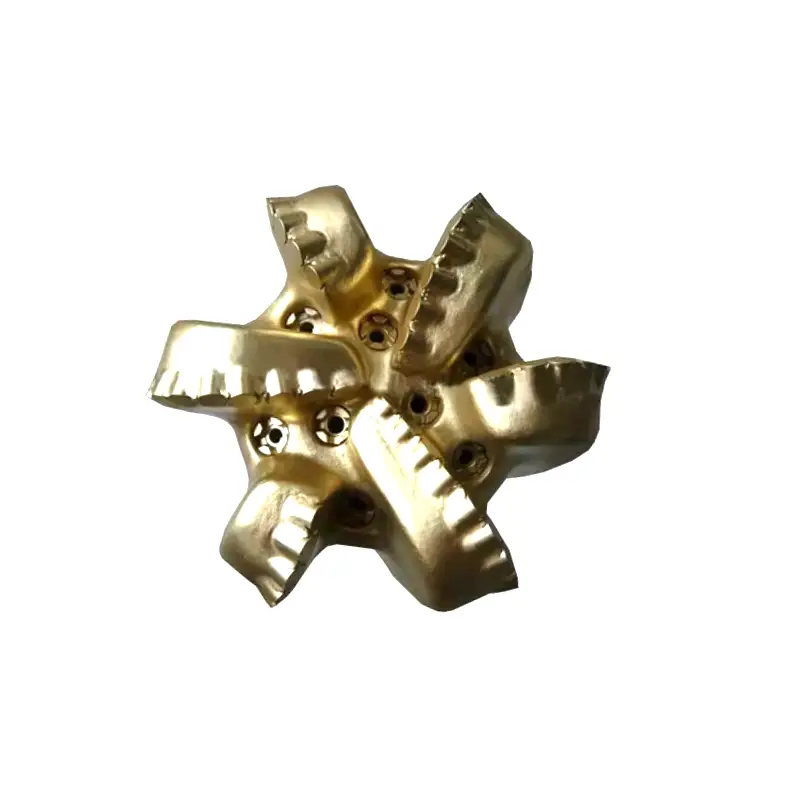
Features: Wing blade drill bits are characterized by their protruding “wing” or blade-like cutting elements, which are either flat-bottomed or spherical. Flat-bottom wing bits are designed for direct forward cutting, while spherical wing bits have a more rounded profile suitable for specific cutting actions.
Benefits: Flat-bottom wing drill bits are highly effective for creating clear, flat-bottomed holes, which can be advantageous for specific blasting patterns or for fault detection. Spherical wing bits provide efficient cutting in underground tunnel projects, optimizing material removal in confined spaces. Both types offer good stability during drilling due to their broad cutting surfaces.
Uses: Flat-bottom wing drill bits are commonly used for blast holes and for creating fault detection holes before rock blasting, ensuring precise charge placement. Spherical wing drill bits are specifically suited for blasting drilling in underground tunnel projects, such as those for tunnels and subways, where their cutting action aids in controlled excavation in confined underground environments.
Cross Drill Bit
Features: Cross drill bits are distinguished by their cross-shaped blade arrangement, where four cutting edges intersect at the center. This configuration provides a significant increase in wear resistance, typically 30% to 50% more compared to straight-shaped bits. Their geometric structure is highly stable, facilitating easy manufacturing and robust blade fixing.
Benefits: The increased number of cutting edges and stable geometric structure lead to enhanced wear resistance, significantly extending the bit’s lifespan and reducing replacement frequency. This contributes to lower operational costs and increased drilling uptime. Their design makes them easy to operate and highly adaptable to various rock drilling conditions, offering reliable performance.
Uses: Cross drill bits are versatile and widely used in percussion drilling for a variety of rock types due to their stability and wear resistance. They are effective in different rock drilling conditions, from medium-hard to hard formations, making them suitable for general construction, mining, and quarrying applications where durability and consistent performance are key.
Ball Tooth Drill Bit
Features: Ball tooth drill bits feature various tooth shapes, including spherical, conical, and conical-spherical inserts, strategically placed on the bit face. The design aims to optimize drilling efficiency and reduce the physical strain on workers by enhancing fragmentation. Each tooth shape offers a specific balance of efficiency, wear resistance, and strength.
Benefits: Conical teeth generally offer the highest drilling efficiency due to their aggressive penetration. Spherical teeth provide the best wear resistance and strength, excelling in abrasive conditions. Conical-spherical teeth offer a balanced performance, combining good efficiency with decent wear characteristics. This variety allows for customization based on rock properties, leading to improved penetration rates and bit life.
Uses: Ball tooth drill bits are widely used in a broad range of drilling applications, from surface mining and quarrying to tunneling and geotechnical investigations. They are particularly effective in formations where optimizing drilling speed and maximizing bit longevity are crucial. The choice of tooth shape depends on the specific rock hardness and abrasivity encountered.
Diamond Core Bit
Features: Diamond core bits are designed with industrial diamonds embedded in a metal matrix on their cutting face. They are typically annular (ring-shaped), allowing them to cut a cylindrical core of rock rather than pulverizing the entire hole. The type of diamond (natural or synthetic), size, and concentration vary based on the rock’s hardness and abrasiveness.
Benefits: These bits excel at obtaining high-quality, intact core samples of rock, which are essential for detailed geological and geotechnical analysis. They provide precise, smooth cuts with minimal disturbance to the formation, leading to accurate data on rock strength, structure, and discontinuities. Diamond bits offer long life in very hard and abrasive rock where other bits might quickly wear out.
Uses: Diamond core bits are indispensable in mineral exploration, geotechnical investigations (especially for foundation design in bedrock), and civil engineering for site characterization. They are used when detailed analysis of the rock mass is required, such as in dam construction, tunnel boring, and deep foundation projects.
Hammer Bit (DTH Hammer Bit)
Features: Hammer bits, also known as Down-The-Hole (DTH) hammer bits, are designed to work in conjunction with a DTH hammer, which is positioned directly behind the bit at the bottom of the borehole. The hammer delivers rapid, high-frequency percussive blows to the bit, while the drill string simultaneously rotates it. The bit typically features robust carbide inserts on its face.
Benefits: DTH hammer bits offer exceptionally high penetration rates in very hard and abrasive rock formations, where rotary drilling alone might be slow and inefficient. The percussive action efficiently fractures hard rock, while rotation clears the cuttings. This combination leads to faster drilling, straighter holes, and reduced energy consumption compared to top-hammer drilling in similar conditions.
Uses: Hammer bits are widely used in large-scale mining (e.g., blast hole drilling), quarrying, water well drilling, and civil engineering projects involving hard rock excavation, such as road cutting and foundation drilling. They are the preferred choice when drilling through competent, hard rock where speed and hole straightness are critical.
Straight Drill Bit
Features: Straight drill bits are characterized by their simple, linear cutting edges, typically arranged in a chisel or cross pattern. They are designed for straightforward penetration, with a focus on ease of grinding and maintenance. Their construction is generally lighter compared to bits designed for harder rock.
Benefits: These bits are well-suited for lightweight rock drills, making them easy to handle and operate. Their simple design allows for straightforward grinding and re-sharpening, extending their usable life and reducing operational costs. They provide effective penetration in less demanding rock formations, contributing to efficient drilling in specific conditions.
Uses: Straight drill bits are primarily used with lightweight rock drills for boring into low-hardness rock layers. They are common in small-scale drilling operations, construction projects involving softer rock, and situations where ease of maintenance and quick grinding are prioritized over aggressive penetration in very hard rock.
Pillar Toothed Drill Bit
Features: Pillar toothed drill bits feature cylindrical or “pillar” shaped tungsten carbide inserts. These inserts are robust and strategically placed on the bit face, designed to withstand significant impact and abrasive wear. Their construction emphasizes durability and long service life in challenging rock formations.
Benefits: These bits offer excellent wear resistance and strength, making them highly effective in medium-hard and sturdy rocks. The pillar tooth design provides consistent performance in both dry and wet drilling conditions, ensuring reliable penetration and reduced bit consumption. Their robust nature contributes to increased drilling uptime.
Uses: Pillar toothed drill bits are mainly suitable for both dry and wet drilling of medium-hard and sturdy rocks. They are widely employed in mining, quarrying, and civil engineering projects where abrasive conditions and robust penetration are required. They are a reliable choice for consistent performance in challenging rock types.
Blast Furnace Drill Bit
Features: Blast furnace drill bits are highly specialized bits designed to operate in extremely high-temperature environments. Their construction involves unique heat-resistant materials and robust cutting elements capable of maintaining structural integrity and cutting efficiency under intense thermal stress.
Benefits: The primary benefit of these bits is their ability to perform drilling operations in active blast furnaces, where temperatures are prohibitive for conventional drill bits. Their high-temperature resistance allows for critical tasks like tapping molten iron or slag, ensuring operational continuity and safety in steelmaking and ironmaking processes.
Uses: Blast furnace drill bits are exclusively used in steelmaking and ironmaking industries. Their specific application is for drilling through the refractory lining of blast furnaces to tap molten iron or slag, requiring a bit that can withstand extreme thermal conditions and maintain cutting performance at very high temperatures.
PDC Drill Bit
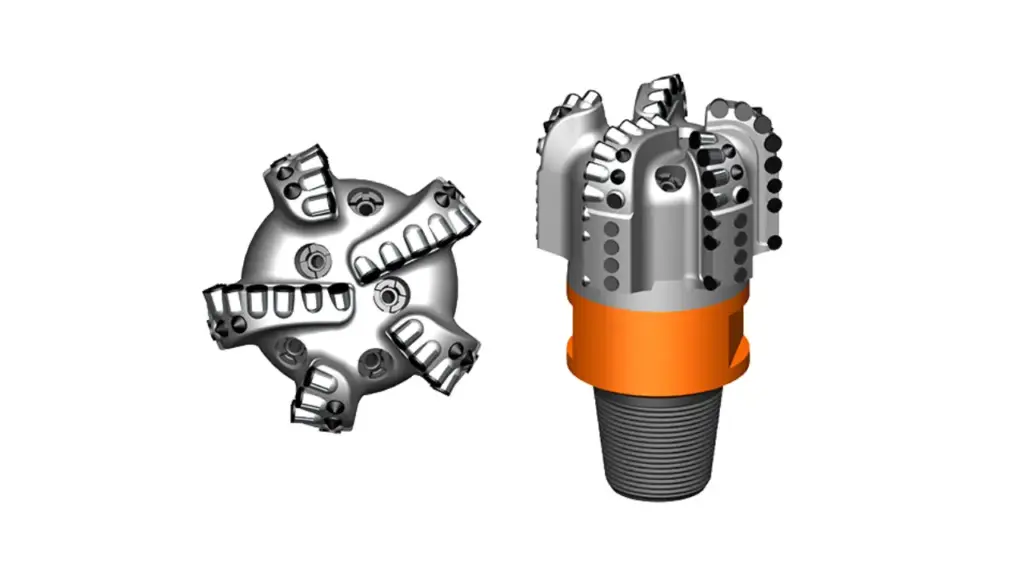
Features: PDC (Polycrystalline Diamond Compact) drill bits feature cutting elements made of synthetic diamond layers bonded to a tungsten carbide substrate. This composite material offers exceptional hardness and wear resistance. PDC bits are designed for shearing action rather than crushing, allowing for lower drilling pressure and higher rotational speeds.
Benefits: PDC drill bits provide significantly higher drilling footage and a lower cost per unit footage compared to conventional bits in suitable formations. Their continuous shearing action results in higher penetration rates, reduced vibration, and a longer bit life. They are highly efficient, minimizing downtime for bit changes.
Uses: PDC drill bits are mainly used for geological survey, exploration, and drilling in soft to medium-hard rock formations, including shale, sandstone, and limestone. They are particularly effective in oil and gas drilling, geothermal drilling, and specific geotechnical applications where achieving high penetration rates in non-abrasive to moderately abrasive formations is a priority.
Roller Cone Drill Bit (Tricone Bit)

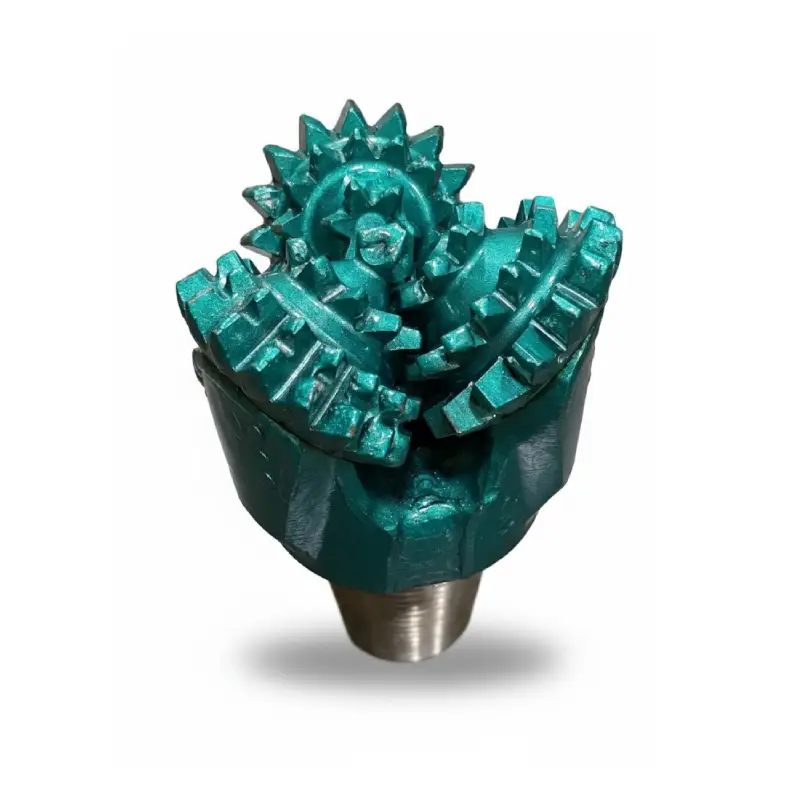
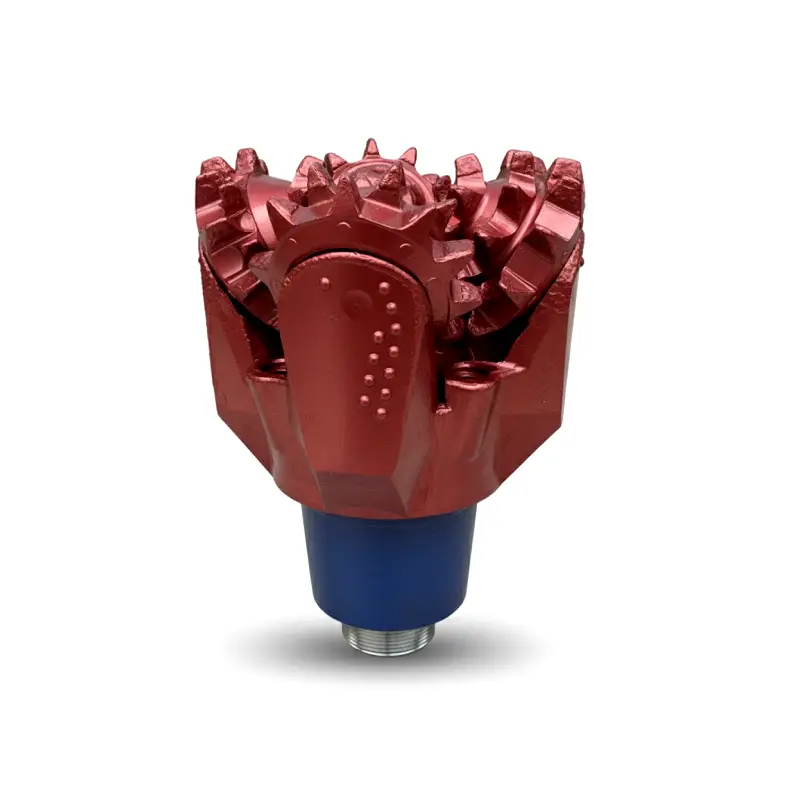
Features: Roller cone drill bits, commonly known as tricone bits, feature two or more (usually three) rotating cones with cutting structures on their surfaces. These cutting structures can be milled steel teeth (for softer formations) or tungsten carbide inserts (TCI) (for harder, abrasive formations). As the drill string rotates, the cones roll on the bottom of the borehole, crushing and shearing the rock.
Benefits: Tricone bits are exceptionally versatile, capable of drilling efficiently through a wide range of rock hardnesses, from soft clays and shales to hard, abrasive granites. Their rolling action minimizes wear on individual cutting elements, contributing to a longer bit life. The variety of cutting structures allows for optimization based on specific rock properties, leading to high penetration rates and good hole quality.
Uses: Roller cone drill bits are widely used in oil and gas drilling, water well drilling, mining, and large-scale geotechnical investigations. They are a go-to choice for applications requiring deep drilling through heterogeneous formations, where their robust design and adaptability make them highly effective for continuous operation.
Reamer Drill Bit
Features: Reamer drill bits are specialized tools designed to enlarge a pre-drilled pilot hole to a larger diameter. They typically feature expandable cutting arms or fixed cutting structures that scrape or cut the walls of the borehole as they are rotated. Reamers are often used in conjunction with a pilot bit that drills the initial, smaller hole.
Benefits: Reamer bits allow for efficient hole enlargement without needing to drill the entire hole at the final large diameter from the surface. This can save time and resources, particularly when dealing with hard formations or when precise hole sizing is critical. They ensure consistent hole geometry and can be designed for various rock types.
Uses: Reamer drill bits are commonly used in horizontal directional drilling (HDD) for pipeline installations, in raise boring for mining, and in civil engineering for creating large-diameter shafts or wells. They are also employed in geotechnical applications where existing boreholes need to be enlarged for specific instrumentation or foundation elements.
Types of Button Rock Drill Bits
Different types of button rock drill bits are designed to optimize performance for various rock formations and drilling conditions. The choice of bit depends heavily on factors like rock hardness, abrasiveness, and the specific drilling application. We provide a range of options to ensure you have the right tool for the job.
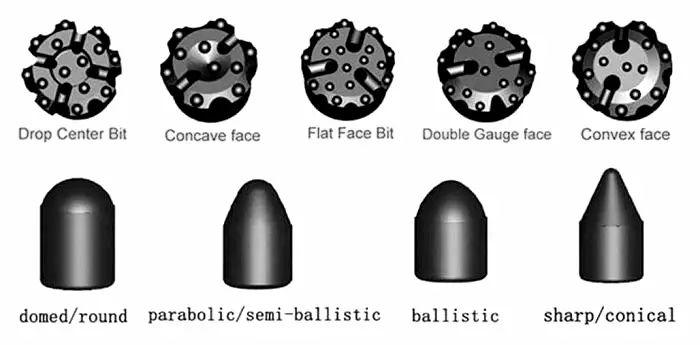
Standard Button Rock Drill Bits
These are the most common type of button bits, featuring a flat or slightly concave face with evenly spaced buttons. They are versatile and widely used for general-purpose drilling in a variety of rock types, offering a good balance of penetration rate and bit life.
Retrac Button Rock Drill Bits
Designed with a tapered skirt or “retract” body, these bits are specifically used in conjunction with a retrac rod. The unique design allows for easy retrieval of the bit and rod from the hole in challenging conditions, such as fractured or caving rock formations.
Drop Center Button Rock Drill Bits
This type of bit features a concave or “drop center” face, which helps to guide the drill string and maintain hole straightness. The drop center design is particularly effective in soft-to-medium hard rock, preventing the bit from “wandering” and ensuring a more accurate drilling path.
Ballistic Button Rock Drill Dits
Known for their pointed, aggressive buttons, these bits are ideal for drilling in medium-hard and hard rock. The ballistic shape concentrates impact force, leading to a high penetration rate and excellent fragmentation, while also protecting the bit body from excessive wear.
Spherical Button Rock Drill Bits
Spherical buttons have a rounded, hemispherical shape that is highly durable and wear-resistant. These bits are typically used in very hard and abrasive rock formations, where their robust design offers a long service life at the cost of a slightly slower penetration rate.
Drill Bit Types in Petroleum
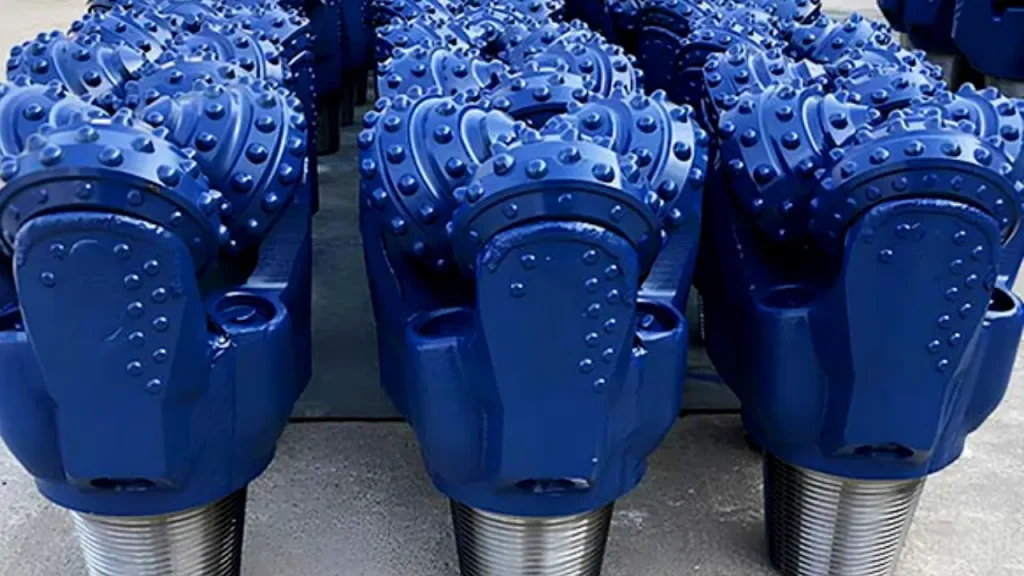
In petroleum drilling, selecting the right drill bit is crucial for efficiency, cost-effectiveness, and maximizing penetration rates through diverse geological formations. The choice depends on factors like rock hardness, abrasiveness, and the drilling method. Generally, oil and gas drill bits fall into two main categories:
Roller Cone Bits (Tricone Bits): These bits feature two or more rotating cones with teeth that crush, gouge, and chip away at the rock. They are highly versatile and widely used for drilling a broad range of formations, from soft to very hard.
- Milled Tooth Bits: Have steel teeth machined directly onto the cones, suitable for softer formations.
- Tungsten Carbide Insert (TCI) Bits: Feature extremely hard tungsten carbide inserts pressed into the cones, ideal for medium to hard rock.
Fixed Cutter Bits: These bits have no moving parts, instead utilizing superhard cutting elements permanently mounted onto the bit body. They drill by a shearing or grinding action.
- Polycrystalline Diamond Compact (PDC) Bits: Equipped with synthetic diamond cutters, these bits excel in soft to medium-hard formations, offering high penetration rates and extended tool life. They are particularly popular in shale and directional drilling.
- Natural/Impregnated Diamond Bits: Incorporate industrial-grade diamonds embedded in a matrix. These bits are designed for extremely hard and abrasive formations, providing exceptional durability and precision, often used for coring or in challenging deep wells.
Hybrid Bits: These combine elements of both roller cone and fixed cutter designs to leverage the strengths of each, offering versatility for complex and interbedded formations.
Types of Drill Bits in Oil and Gas
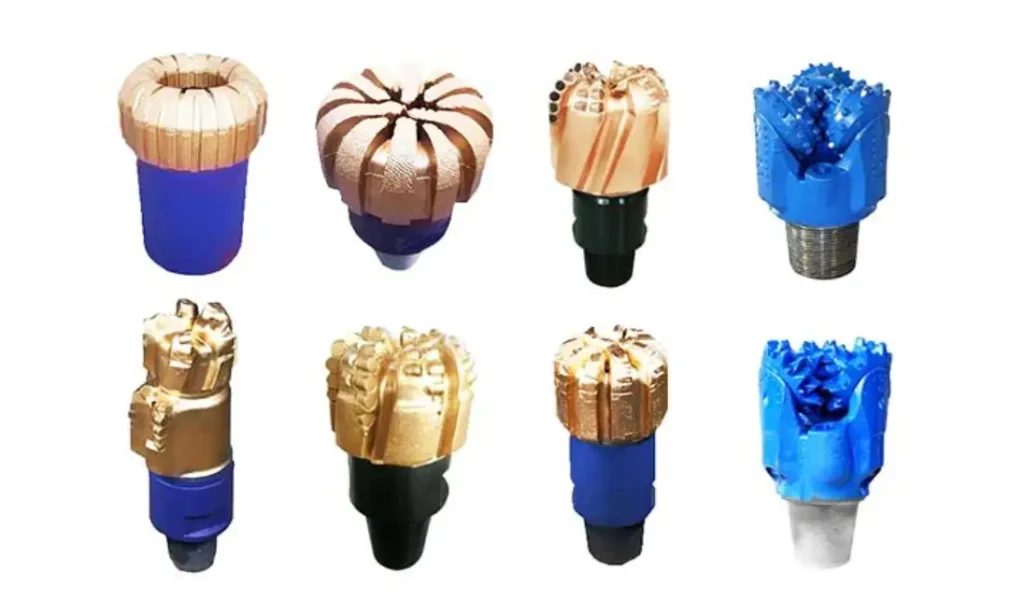
In oil and gas drilling, selecting the right drill bit is crucial for efficient penetration through diverse geological formations. These bits are categorized based on their cutting mechanism and the materials used, optimizing performance for various rock types, from soft shales to hard, abrasive sandstones.
- Roller Cone Bits (Tricone Bits): These bits feature two or three rotating cones with teeth (either milled steel or tungsten carbide inserts). They crush and chip the rock as they roll across the bottom of the borehole. Milled tooth bits are typically for softer formations, while Tungsten Carbide Insert (TCI) bits are designed for harder, more abrasive rock due to their superior wear resistance.
- PDC Bits (Polycrystalline Diamond Compact Bits): These are fixed-cutter bits, meaning they have no moving parts. They feature synthetic diamond cutters (PDCs) bonded to a tungsten carbide substrate, which shear or scrape the rock. PDC bits are highly efficient in a wide range of formations, from soft to medium-hard, offering high penetration rates and extended tool life, especially in shales and limestones.
- Diamond Bits (Impregnated or Surface-Set): These bits utilize industrial-grade diamonds embedded in a metal matrix (impregnated) or set on the bit’s surface. They are designed for drilling extremely hard and abrasive formations, where their superior hardness and wear resistance allow for continuous cutting. They are often used for coring operations to retrieve rock samples.
- Hybrid Bits: As their name suggests, hybrid bits combine elements from different bit types, often integrating both roller cones and PDC cutters. This design aims to leverage the strengths of each technology, providing versatility to handle interbedded formations (alternating soft and hard layers) and optimize performance across varying drilling conditions.
What is the Best Drill Bit for Rock?
There isn’t a single “best” drill bit for all rock types; the optimal choice depends entirely on the specific geological formation, drilling application, and desired outcome. The ideal drill bit maximizes penetration rate, extends bit life, and ensures cost-effectiveness for the given conditions.
- For Very Hard, abrasive rock, diamond core bits (for core samples) or Hammer (DTH) bits with robust tungsten carbide inserts are generally best, as they are designed to efficiently fracture or abrade extremely tough materials.
- For Medium to Hard Rock: Roller cone bits (tricone bits) with TCI inserts or cross drill bits offer excellent performance due to their crushing and shearing action or enhanced wear resistance.
- For Soft to Medium-Hard Rock/Unconsolidated Formations: PDC (Polycrystalline Diamond Compact) drill bits excel with their shearing action, providing high penetration rates. Auger bits are suitable for softer soils and weathered rock.
- For Specific Purposes: Spherical bits are best for creating rounded cavities, while reamer bits are for enlarging existing holes. Blast furnace bits are uniquely designed for extreme high-temperature environments.
How to Choose Suitable Drill Bits for Rock Drilling
Selecting the appropriate rock drill bit is critical for optimizing drilling efficiency, maximizing bit lifespan, and achieving desired project outcomes. The choice hinges on a careful assessment of several interconnected factors related to the geological conditions and drilling objectives.
- Rock Hardness and Abrasivity: The primary factor. Harder rocks (like granite) demand bits with durable, tough inserts (e.g., TCI tricone, PDC for specific hard rocks), while softer, less abrasive rocks (like shale) can use milled tooth bits or straight bits for efficiency.
- Drilling Method: The type of drilling rig and method (e.g., rotary, percussion, DTH) dictates the bit connection type and inherent cutting action. Rotary drilling often uses roller cones or PDC, while percussion drilling uses button or cross bits for impact.
- Hole Diameter and Depth: Larger and deeper drilling holes in the rock typically require more robust bits with greater cutting structure and robust bearings (e.g., large tricone bits), while smaller or shallower holes allow for a wider range of bit types.
- Geological Formation: Beyond hardness, consider formation characteristics like fracturing, abrasiveness, and presence of water or unconsolidated layers. This influences bit selection for stability, hole cleaning, and minimizing deviation.
- Cost vs. Performance: Evaluate the balance between bit purchase cost and its expected performance (penetration rate, lifespan). Sometimes a more expensive bit with higher efficiency can lead to lower overall drilling costs per meter.
- Desired Sample Quality (for investigation): For geotechnical investigations, if intact core samples are needed, specific core bits with diamond or carbide inserts are chosen. For general hole advancement, non-coring bits are used.
Conclusion
Choosing the right rock drill bit type is paramount for drilling efficiency and cost-effectiveness across diverse geological formations. Understanding the nuances between button bits, chisel bits, and various inserts is key to optimizing performance in soft, medium, or hard rock.
Selecting the appropriate bit directly impacts penetration rates, bit life, and overall project success. A meticulous match between the drill bit and the rock type minimizes wear, reduces downtime, and ensures the highest quality drilling results for any geotechnical or mining operation.
For a reliable supply of rock drill bits, get wholesale rock drill bits from Sinodrills. We can customize all drill bits for rock drilling to meet your requirement.

